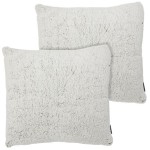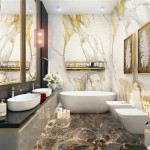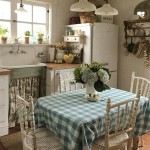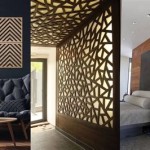Middle Eastern House Decor: A Journey Through Culture and Style
Middle Eastern house decor is a vibrant tapestry woven from rich cultural heritage, diverse artistic traditions, and a deep connection to the natural environment. This style encompasses a wide range of aesthetic expressions, reflecting the historical influences and geographical variations across the Middle East. From the opulent palaces of Morocco to the minimalist designs of the Arabian Peninsula, Middle Eastern decor offers a wealth of inspiration for creating spaces that are both beautiful and imbued with meaning.
Understanding the nuances of Middle Eastern decor requires an appreciation for its fundamental principles. It is characterized by the use of warm, earthy tones, intricate patterns, luxurious textiles, and a focus on creating comfortable and inviting spaces for gathering and hospitality. This style often incorporates elements that reflect the region's climate and landscape, such as natural materials like wood, stone, and clay, as well as designs that provide shade and ventilation.
The influence of Islamic art and architecture is also readily apparent in Middle Eastern decor. Geometric patterns, calligraphy, and intricate arabesques are commonly used to adorn walls, furniture, and decorative objects. These elements are not merely decorative; they often carry symbolic meaning and reflect the spiritual values of the region.
Key Elements of Middle Eastern Decor: Color and Texture
Color palettes in Middle Eastern decor typically draw inspiration from the surrounding landscape. Warm, earthy tones such as sand, terracotta, ochre, and brown are frequently used to create a sense of grounding and tranquility. These colors are often complemented by richer hues such as deep reds, blues, and greens, which are reminiscent of spices, jewels, and lush oases.
However, the specific color choices can vary depending on the regional style. For example, Moroccan interiors often feature bold and vibrant colors, while more minimalist Arabian designs may emphasize neutral tones and subtle accents. The use of color is carefully considered to create a sense of harmony and balance within the space.
Texture plays a crucial role in creating the tactile richness that is characteristic of Middle Eastern decor. Luxurious textiles such as silk, velvet, and brocade are often used for upholstery, curtains, and cushions. These fabrics add a sense of opulence and comfort to the space. Other important textures include natural materials like wood, stone, and clay, which are used for flooring, walls, and decorative objects. Intricate carvings, inlaid mosaics, and hand-painted ceramics further enhance the textural complexity of the design.
The layering of different textures is a key technique in Middle Eastern decor. For example, a room might feature a plush wool rug layered over a stone floor, with silk cushions scattered on a velvet sofa. This creates a sense of depth and visual interest, making the space feel inviting and comfortable.
Patterns and Motifs: The Language of Design
Patterns and motifs are integral to Middle Eastern decor, adding visual interest and cultural significance to the space. Geometric patterns, inspired by Islamic art and mathematics, are commonly used on walls, floors, and decorative objects. These patterns often feature repeating shapes such as stars, polygons, and intricate arabesques. They are not often symmetrical, often leading to an immersive experience for the eyes.
Calligraphy, the art of beautiful writing, is another important element in Middle Eastern design. Verses from the Quran, proverbs, and poems are often rendered in elegant scripts and used to adorn walls, textiles, and decorative objects. Calligraphy not only adds visual beauty but also serves as a reminder of faith and cultural values.
Floral motifs, inspired by the natural world, are also frequently used in Middle Eastern decor. These motifs can range from stylized depictions of roses and tulips to more abstract representations of plants and flowers. They are often used on textiles, ceramics, and other decorative objects, adding a touch of nature and beauty to the space.
The specific patterns and motifs used can vary depending on the regional style. For example, Moroccan designs often feature intricate geometric patterns and vibrant colors, while Persian designs may incorporate more floral motifs and delicate calligraphy. The use of patterns and motifs is carefully considered to create a sense of harmony and balance within the space.
Another aspect of patterns in Middle Eastern decor lies within symmetry and repetition. The use of tessellations create a feeling of infinity and can be seen in architecture, textiles, and even pottery. These repeating patterns embody the concept of unity in diversity – one of the key messages in cultures where this decor is popular.
Furnishings and Accessories: Creating an Inviting Atmosphere
Furnishings in Middle Eastern decor are often characterized by their comfort, functionality, and aesthetic appeal. Low seating, such as floor cushions, poufs, and low sofas, is a common feature, creating a relaxed and inviting atmosphere for gathering and socializing. These seating arrangements are often complemented by low tables, which are used for serving food, drinks, and other refreshments.
Wood is a commonly used material for furniture in Middle Eastern decor. Intricate carvings, inlaid mosaics, and hand-painted details often adorn wooden furniture, adding a touch of artistry and craftsmanship. Metalwork, such as brass and copper, is also used for furniture and decorative objects, adding a touch of opulence and elegance.
Lighting plays a crucial role in creating the ambiance of a Middle Eastern home. Ornate lanterns, chandeliers, and sconces, often made of metal and adorned with intricate patterns, are used to cast a warm and inviting glow. Candles and oil lamps are also commonly used, adding a touch of romance and intimacy to the space.
Accessories are essential for adding personality and character to Middle Eastern decor. Rugs, carpets, and kilims are used to cover floors and add warmth and texture to the space. Decorative objects such as ceramics, pottery, and metalwork are used to adorn shelves, tables, and walls. Plants and flowers are also used to bring a touch of nature indoors, creating a sense of freshness and vitality.
The selection of accessories is carefully curated to reflect the homeowner's personal taste and cultural heritage. Objects that have sentimental value or tell a story are often displayed prominently, adding a sense of history and identity to the space. Family heirlooms, handcrafted items, and souvenirs from travels are all common elements in Middle Eastern decor.
Ultimately, Middle Eastern house decor is a reflection of the region's rich history, diverse culture, and deep appreciation for beauty and hospitality. By understanding the key elements and principles of this style, it is possible to create spaces that are not only aesthetically pleasing but also imbued with meaning and cultural significance. The emphasis on comfort, texture, pattern, and color creates an atmosphere that is both inviting and inspiring.
In practical application, specific regional influences need to be considered. For example, a Moroccan-inspired room may feature vibrant colors, intricate tilework (zellij), and ornate metal lanterns, while an Arabian-inspired space might emphasize simpler lines, neutral colors, and textured fabrics. The key is to adapt design elements in ways that celebrate the essence of Middle Eastern aesthetics while harmonizing with personal preferences.
The incorporation of water features, such as small fountains or indoor ponds, can also enhance a decor. These elements bring a sense of tranquility and connect the interior space with the natural environment – important considerations in Middle Eastern design. Water, like desert oases, is often symbolic in this type of design.
Preservation of natural light while maintaining privacy is an additional design principle. The use of latticework screens (mashrabiya) or intricate window coverings ensures that sunlight can diffuse into interior spaces while controlling the intensity and preserving privacy from the outside. Such details demonstrate how Middle Eastern design harmonizes aesthetic beauty with practical considerations.

7 Interior Design Tips To Create The Perfect Middle Eastern Project And Also Most Suitable Lighting Set Unique Blog

Middle Eastern Diy Home Décor Ideas

Middle Eastern Diy Home Décor Ideas

Middle Eastern Diy Home Décor Ideas

Middle Eastern Interior Design Trends And Home Decorating Ideas Decor Asian

Modernhomedesigning Com Arabian Living Room Middle Eastern Home Decor Arabic

Arabic Style Discover The Secrets Of Magic Décor From Orient

370 Best Middle Eastern Decorating Style Ideas Design Moroccan Interiors

Middle Eastern Décor With Mid Century Pieces

Ideas For Middle Eastern Style Home Decoration Decor Report
Related Posts







